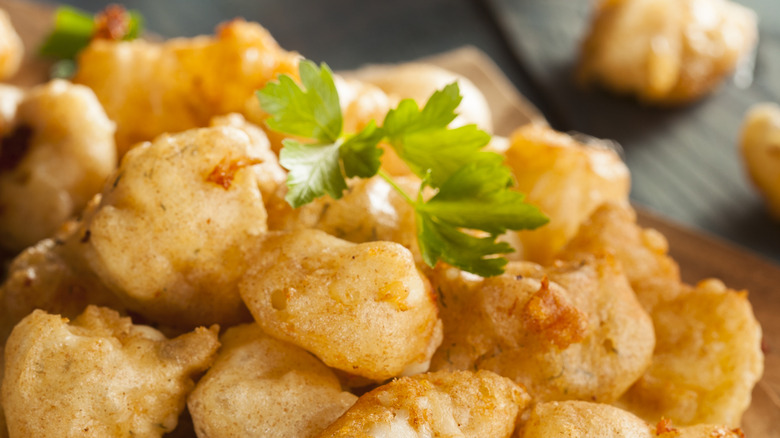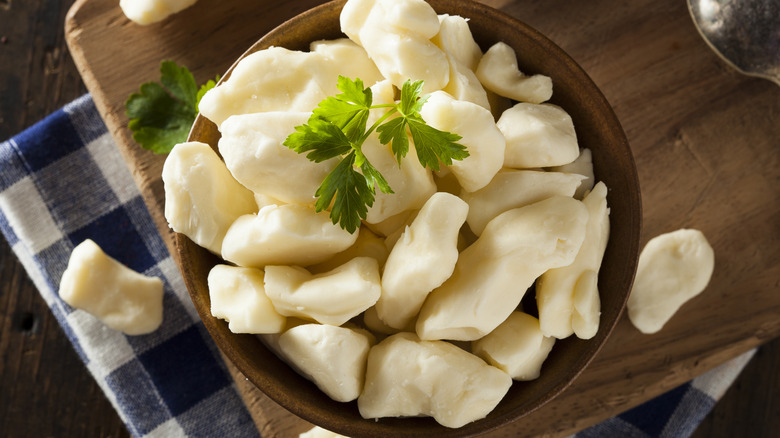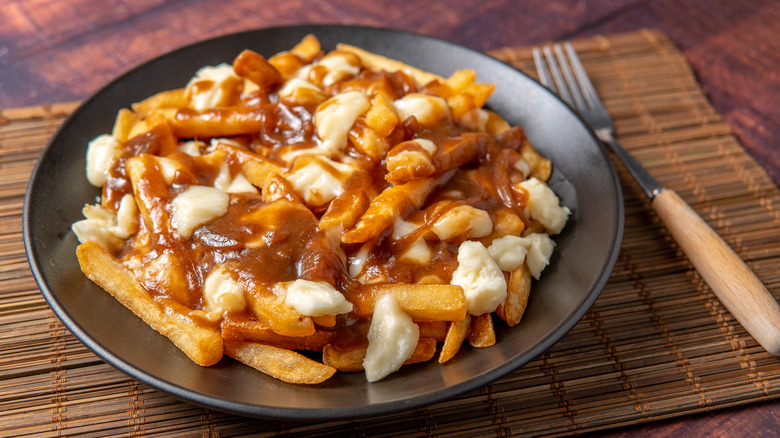Patience Is The Ultimate Tip You Need When Making Cheese Curds
Cheese curds are not to be confused with regular cheese; these salty, savory curds are created using a similar process, but there are substantial differences. According to Culture Cheese Magazine, cheese curds are just cheddar cheese prior to its aging process, which is why they resemble cheddar but have a different texture and flavor. You can certainly enjoy cheese curds as just the curd themselves, but they're often best when fried. After all, there is hardly anything better than salty, cheesy food — except when it's breaded and tossed into a fryer.
According to Thrillist, there has been discussion that globuli, an Ancient Roman dish, first popularized fried curds thousands of years ago. However, fried cheese curds are much newer to the United States than you might have thought. The curds became popular back in 1975 when they were first spotted at the Minnesota State Fair. Since then, they've become tremendously popular, especially in the Midwest. Still, if you want to make them yourself, you'll have to practice a bit of patience.
How do you make cheese curds?
There is some good news: You don't have to age cheese curds for 10 years like you do with some types of cheddar. The bad news: It's not exactly a simple process. According to The Takeout, the process starts by pasteurizing milk, then adding bacteria and rennet (enzymes used to coagulate the heated milk). As a result, curds form.
Once the curds form, the milk is drained, and the curds are pressed to dry them out. The curds initially form in large pieces, and there are several processes used to turn them into the bite-sized snacks we know and love. The Takeout says they are cut with a cheese harp, then stacked on top of each other and run through a curd mill, where they're chopped up. Finally, they're washed and salted, which gives them that extra flavor punch that makes them oh, so good.
If you want to make your own cheese curds, you certainly can, but it's no quick process. Ultimately, you'll need to dedicate several hours. According to a recipe from New England cheesemaking, you'll have to set aside roughly four hours to the process, though the curds could form a bit sooner. Plus, you have to keep them at exactly 96 degrees Fahrenheit, which isn't so easy. However, it's certainly possible to make them yourself, as long as you understand the steps in the process, the importance of temperature, and how to be patient.
Cheese curds are best when consumed within 12 hours
While you definitely need patience to make cheese curds, you certainly don't need patience to eat them. Rather, for cheese curds at their highest quality, you'll want to consume them within a few days. There is no aging process whatsoever for cheese curds, and according to Wisconsin Cheese, they only stay at peak freshness for three to five days. That is when you'll hear the iconic squeaking as you eat them; it has to do with how tight the protein-calcium bonds are that make up the curds. Those bonds will start to break after a few days, and the curds will lose flavor.
Curds are still perfectly fine to eat sans squeak, but that noise will indicate their freshness. Luckily, there is one trick for recapturing that squeak; Wisconsin Cheese says to microwave your curds for up to five seconds, which helps those bonds reconnect (don't microwave them for too long, though, or they'll start to melt).


